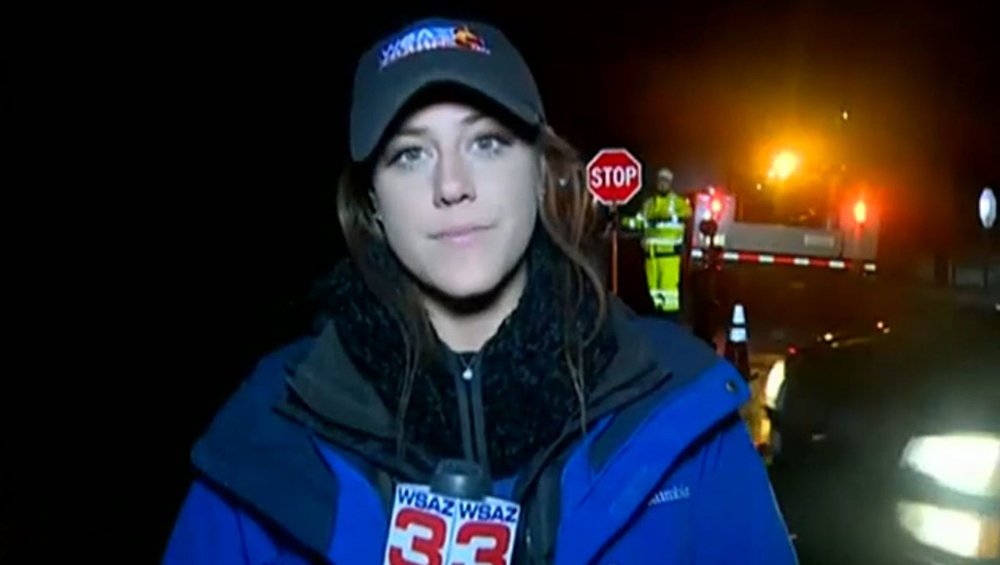
News Directors Must Own The MMJ Safety Problem


Hank Price
When the move to multimedia journalism first became popular, a good friend, whose company was going all in, told me how excited he was about the new system.
“Instead of seven reporters and seven photographers in a medium-market newsroom, we will have 14 journalists who report and shoot,” he enthused. Of course, it didn’t work out that way. The newsroom he used as an example more likely terminated all their photographers, leaving seven reporters to do their original jobs while also shooting and editing.
With much of the industry now making multimedia journalism a standard practice, this might be a good time to talk about the real reason so many companies shrank their news crews to one person, the blunt reality no one talks about: Converting to MMJs was a purely financial decision and journalism was never a consideration. When it became possible to replace live trucks with LTE cards, many stations also eliminated truck operators, giving yet another responsibility to reporters.
Most very small markets have always had single reporter/photographers as an economic necessity, and even large stations occasionally have talented people who want to shoot their own footage, but in top stations those continue to be the exceptions, not the norm.
The situation today, where many major companies field one-person crews as their normal way of doing business, has its roots in the economic recession of 2009 that literally threatened to put some stations out of business. Retransmission consent saved the day, but once a new system is baked into the profit margin there is no going back.
Here’s another reality: Because advertising is now a second revenue stream, fewer companies are still willing to make the deep investments required to compete at the highest levels.
Since we are being frank, let’s ask ourselves another hard question: How much does the change really matter? When I was at WJLA Washington in the early 1980s, photographers and technicians were up in arms because management had reduced field crews from reporter, photographer and sound recorder to just two people, reporter and photographer. Many said it would be the end of quality in TV news. They were, of course, wrong because the change had been driven by technology, not just expense savings. Video recording simply required fewer people than film.
Other than the development of smaller field cameras, the move to MMJ had no other driver than profit. One can’t help but be reminded of the old saying that “a great photographer can sometimes make a mediocre reporter look really good while a poor photographer can make a great reporter look bad.” Stations can certainly achieve good work using MMJs, but greatness? I think not.
Now to the question of safety. It’s surprising that in the second decade of putting lone reporters on the street, industry discussion of safety has not risen to the forefront as a major issue.
The recent near-tragedy at WSAZ Charleston, W. Va., in which reporter Tori Yorgey was sideswiped by a car, is anything but an outlier. Since the beginning of the business, covering the news has been dangerous, both from hazards and from people of bad intentions, but how a reporter standing near a highway trying to communicate with a producer, set up a live shot, stay in frame and think about what she is saying while still having a heightened awareness of her surroundings is beyond me. Sadly, the one-person live shot is also now a regular part of our business.
The WSAZ incident has been widely reported in the mainstream press, with some reaction among journalists, as well as an interesting town hall among reporters, but I’m unaware of any public comment from upper management or ownership. Was anything learned at the highest levels?
I’d love to see television station owners have a new awareness of safety and respond by adding staff, at least for live shots. But we are in a contracting industry, not an expanding one, so we must look seriously at what stations are able do with current resources. The people with chief responsibility for seeing that happen are news directors.
The best local news directors have always been keenly aware of reporter safety, always understanding that no story is worth risking an employee’s life. In the past, hazardous situations have been handled by sending enough people or by simply finding another way to report the story. With today’s far smaller staffs, in some cases the first option is simply not available.
That means news directors must make hard decisions while driving home safety every day. I’ve known plenty of reporters who were fearless, others who seemed to feel some kind of obligation to put themselves into harm’s way. And don’t forget, all great reporters are highly competitive, so safety cannot simply be left to people in the field. News directors, or their designated managers, must be actively involved.
One news director, Jerry Goodman at WALB Albany, Ga., recently posted a safety policy giving clear guidance to reporters in the field. It’s a thoughtful response and offers a good example of engagement with the issue because it lays out boundaries for a very young staff while also offering them a philosophical foundation.
It’s a good start, and I salute him for it. Other news directors may not agree with all of Goodman’s particular rules, but the point is that he’s actively addressing the issue.
Because circumstances change with every story, it will never be possible to create an inherently safe environment, but there are baseline things that can be done. Every news director should have honest discussions with their staffs, followed by a written policy. News directors must then stay engaged because safety will only be paramount if strong enforcement is also a part of the policy.
We cannot make reporting immune to risk, but that does not lessen our responsibility to employees which is to do our best to protect their safety. Now is the time for company leaders to honestly engage the elephant that has long been in many newsrooms. To do less would be negligent management.
Hank Price is a media consultant. His second book, Leading Local Television, has become a standard text for television general managers. In a 30-year general management career, Price led TV stations for Hearst, CBS and Gannett, including WBBM Chicago, KARE Minneapolis, WVTM Birmingham, Ala., and both WXII and WFMY in Greensboro/Winston Salem, N.C. Earlier, he was a consultant with Frank N. Magid Associates. Price also spent 15 years as senior director of Northwestern University’s Media Management Center. He is currently director of leadership development for the School of Journalism and New Media at Ole Miss.



































Comments (1)
Kathy Haley says:
February 10, 2022 at 2:01 pm
Thanks for this important column, Hank. I would go a step further. News directors and station group news VPs must come up with a set of rules and recommendations and take them to their CEOs and owners. There are clear business liability issues here — aside from the obvious employee relations one — that must be dealt with or the local TV industry is headed for a much larger black eye. The buck stops at the top.